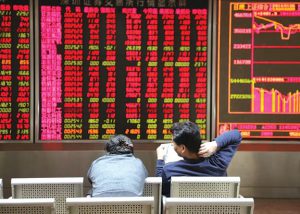Bloomberg
A $2 trillion swathe of China’s local bond market is approaching a risky inflection point as issuers struggle to refinance maturing debt.
Net financing — new yuan bond issuances minus maturities — for the country’s local government financing vehicles, or LGFVs, turned negative in the fourth quarter of 2022 for the first time in at least four years, according to data provided by S&P Global Ratings. While the measure turned positive in January, it was still down 83% from a year earlier at 48.9 billion yuan ($7.1 billion).
The funding slump, which has coincided with an uptick in pulled bond deals, adds to signs of strain in a murky corner of the debt market that has long been flagged by China skeptics as a threat to financial stability but has so far avoided a major wave of delinquencies.
Even as Asia’s largest economy emerged from strict Covid Zero curbs, 22 LGFV bond issuers missed deadlines on commercial bill payments in January, five more than the previous month, according to Huaan Securities. Shandong, Jiangsu, Guizhou, Hunan and Henan are among provinces that have the most LGFV issuers that missed payment deadlines on commercial bills.
LGFV bonds also came under renewed scrutiny after a construction company in the southwestern province of Guizhou extended loans totalling nearly 15.6 billion yuan by 20 years. Such a move could foreshadow an increase in similar proposals and signal more restructuring risk for holders of private credit issued by LGFVs in financially weak regions, according to a Fitch Ratings report.
Entrusted with funding public projects such as roads, bridges and subways, these local finance vehicles have emerged as one of the weakest links in China’s state sector with a pile of debt in the wake of a protracted property-sector crisis and massive Covid-linked spending.
Surging yields and rising investor concerns have prompted firms, including many LGFVs, to pull planned bond sales worth 150 billion yuan since the start of November, according to data compiled by Bloomberg.
Reflecting expectations for higher yields this year, a number of LGFVs have recently increased coupon rates on bonds that allow investors to seek early redemptions via put options, Shanghai Securities News reported this week.
By end-December, LGFVs had about 13.5 trillion yuan of outstanding onshore bonds, according to data from S&P.
In recent years, regulators have been trying to tamp down investor expectations that the government will come to the rescue of troubled LGFVs. Several provinces accelerated efforts to reduce the stockpile of so-called hidden debt, which mainly refers to LGFV borrowing, and vowed to continue shrinking the pool this year, according to their 2023 budget reports.
The finances of many LGFVs have taken a turn for the worse after they became embroiled in real estate deals, as cities and local administrations started to step in as white knights to help the nation’s troubled developers.
As part of the government-backed effort to ease the property crisis, LGFVs snapped up more than half of the residential land sold last year, spending 2.2 trillion yuan, according to a tally by Guangfa Securities Co. earlier this month. But despite those purchases, local government income from land sales slumped 23% to 6.69 trillion yuan last year, lowest annual take since 2018, according to official data.
In addition to the drop in land-sale income, Covid-related expenditures have undermined the ability of regional authorities to support LGFVs, making the latter vulnerable.
 The Gulf Time Newspaper One of the finest business newspapers in the UAE brought to you by our professional writers and editors.
The Gulf Time Newspaper One of the finest business newspapers in the UAE brought to you by our professional writers and editors.
